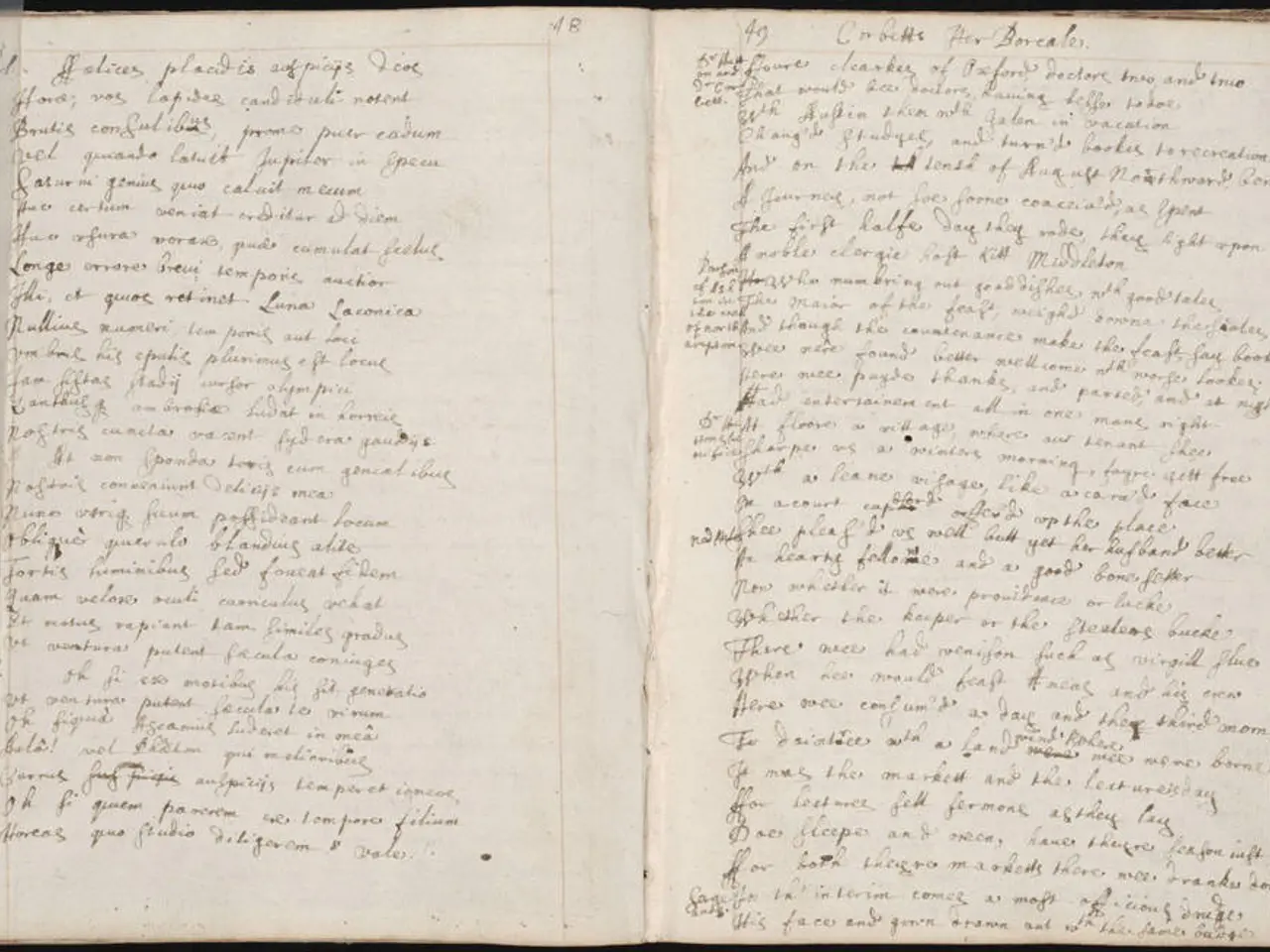Comprehensive Collection of Literature on the Art of Writing
In the world of writing, navigating the thin tightrope between commercialism and being truly literary can be a daunting task. Ray Bradbury, in his collection of essays "Zen in the Art of Writing," offers insights on this very challenge. This article aims to provide a collection of books that, when read as a whole, will make you a better writer.
Dialogue, Action, and 3/5-Act Structure
For improving dialogue, action, and structure, several books stand out. "Writing Dialogue" by Tom Chiarella offers practical techniques for crafting authentic, engaging dialogue that drives the story and reveals character. "Action: The Action System for Writers" by Lewis D. LaRosa focuses on writing clear, vivid action scenes that show rather than tell, enhancing pacing and reader engagement.
If you're interested in adapting the 3-act model for novels, Save the Cat! Writes a Novel by Jessica Brody and Story Engineering by Larry Brooks are particularly valuable. These books detail how to structure stories to sustain tension and pacing across multiple acts. "The Anatomy of Story" by John Truby also delves deep into story structure and character development, providing guidance for multi-act structures beyond the classic three acts.
Building a Strong Foundation
A clear and compelling story foundation is key for a strong narrative structure. An interesting premise, sympathetic hero, and a focused A-story are essential for a story that works within 3- or 5-act frameworks. Learning from favourite authors by studying how they handle dialogue, action, and pacing can provide practical guidance to improve technique.
Structural Guides and Planning Methods
Applying planning methods like the Snowflake Method (start simply and expand ideas) helps organise complex story structures involving multiple acts. The emphasis on active voice and "show, don’t tell" techniques for action and dialogue, as seen in books like Save the Cat! Writes a Novel and Story Engineering, keeps writing vivid and engaging.
Expanding Your Perspective
Books such as "The Spooky Art" by Norman Mailer, "Zen in the Art of Writing", "The Writing Life" by Annie Dillard, and "The Artist's Way" by Julia Cameron can help expand a writer's mind, test their mettle, and change their perspective on the writing process.
A Pragmatic Approach and a Philosophical Perspective
"On Writing" by Stephen King offers a pragmatic and accessible approach, focusing on the importance of restraint and transferring images from the writer's mind to the reader's. "The Spooky Art," on the other hand, offers a more esoteric and philosophical perspective.
The Chicago Manual of Style
Lastly, the "Chicago Manual of Style" is a style manual that sets out rules for grammar and punctuation, addresses grey areas, and offers advice on the best approach to take when unsure of the best way to use punctuation or present a word/phrase. However, it is important to note that the Chicago Manual is specifically for American English, and a different manual may be needed for writing for publication in a country that is not using American English.
This list of books supports the three principles on which the authors at BubbleCow teach and edit: a modern simplicity and clean writing style, the importance of using dialogue and action to tell the story, and the essential nature of structure. Gary Smailes, the author of this article, is the founder of BubbleCow, a company that provides resources for writers.
Gary Smailes, a freelance writer, historian, and researcher with more than twenty books in print, contributed this article. He is represented by agent Andrew Lownie. The article was originally published on a specific website, though the exact source is not provided in the paragraph.
- To enhance one's understanding of dialogue, action, and structure, reading books such as "Writing Dialogue" by Tom Chiarella and "Action: The Action System for Writers" by Lewis D. LaRosa can be highly beneficial.
- For those aiming to delve deeper into the philosophical aspects of writing, reading works like "Zen in the Art of Writing" by Ray Bradbury or "The Spooky Art" by Norman Mailer can offer unique perspectives on the craft of writing.




